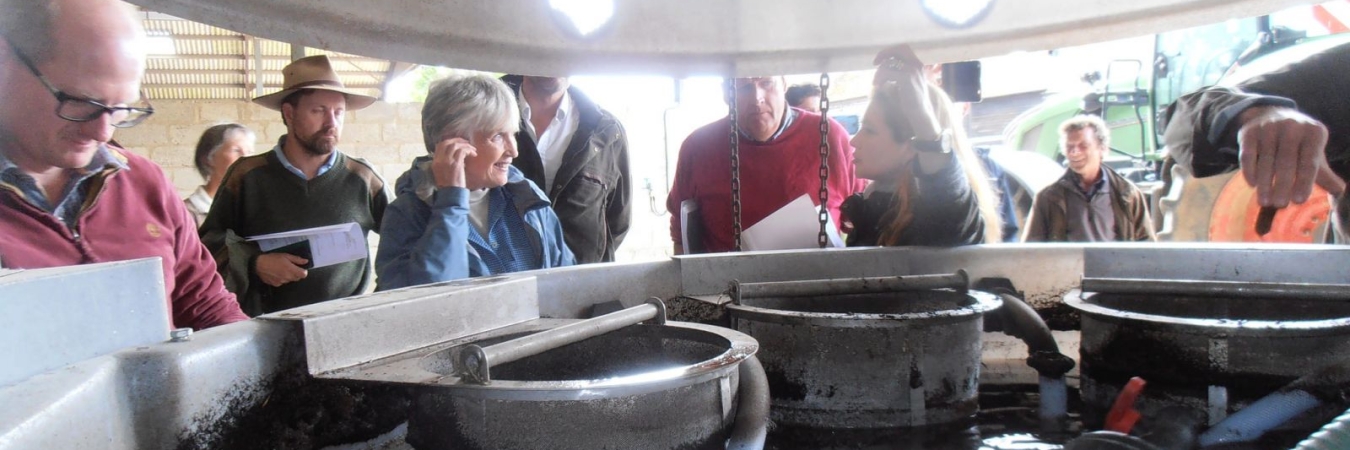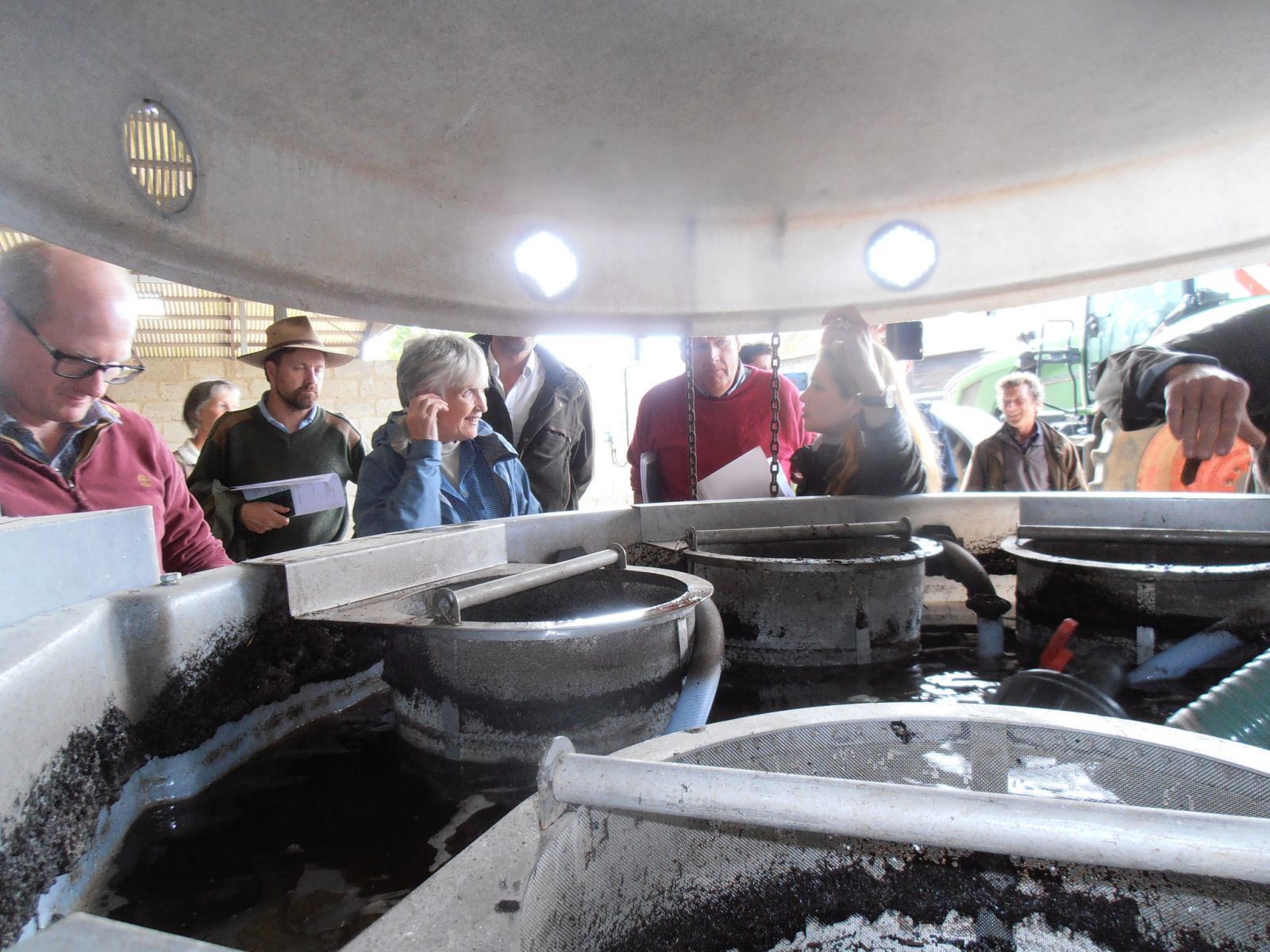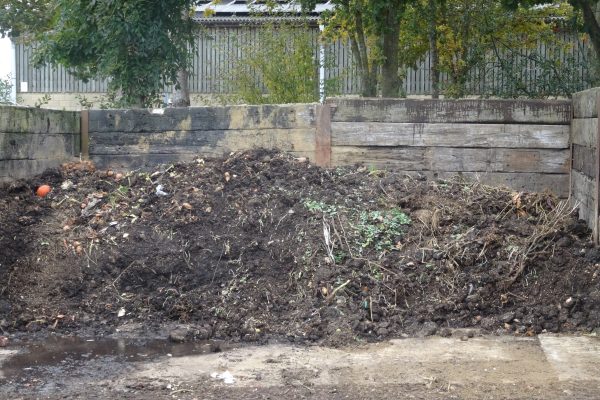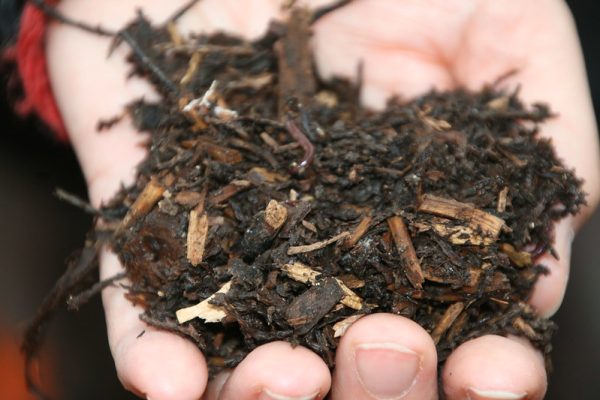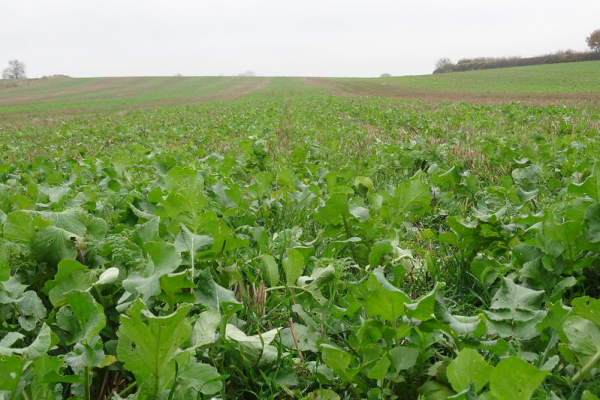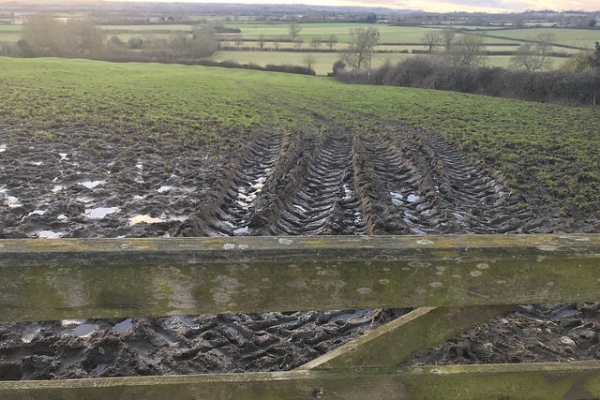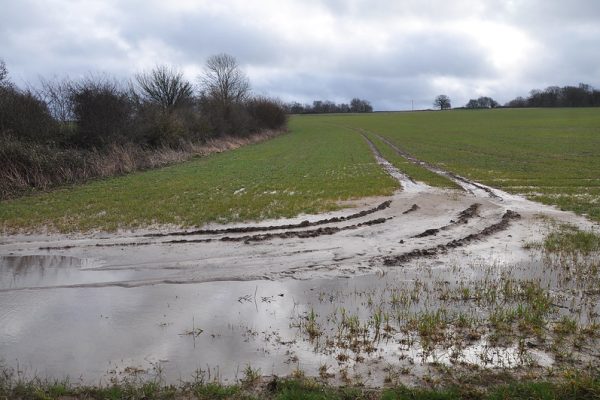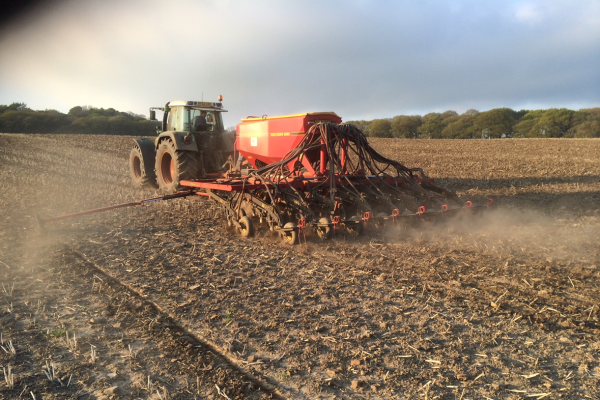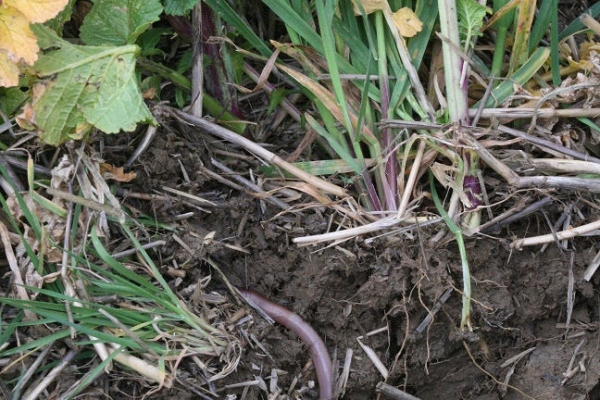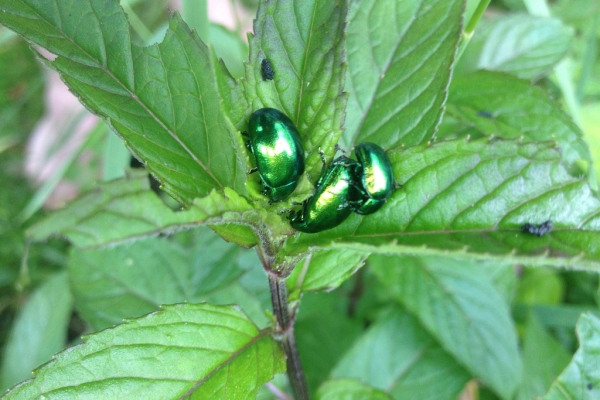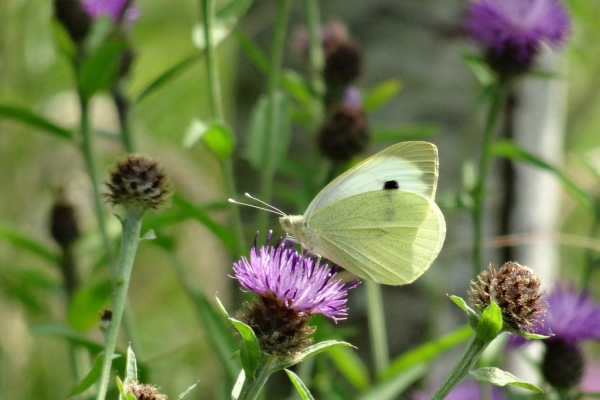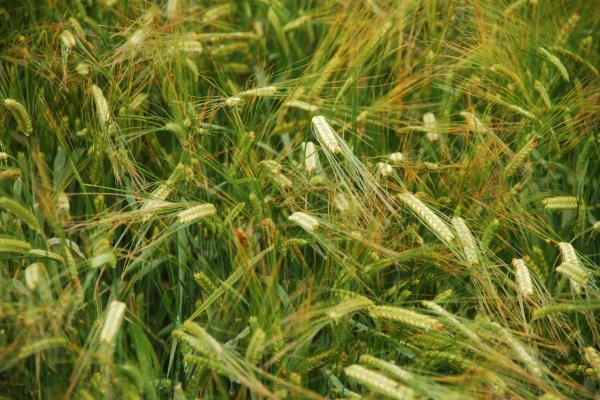Editor’s blog – Grubs and bugs
Welcome to this month’s newsletter! We got amongst the dirt and in amongst the greenhouses in July; focusing on improving soil biological activity and managing crop pests and diseases. A healthy soil with optimal physical, chemical and biological properties will encourage plant resistance to insect pests and diseases, and practices such as crop rotations, using cover crops, and encouraging natural pest predators, can help improve soil fertility and prevent crop pests and diseases.
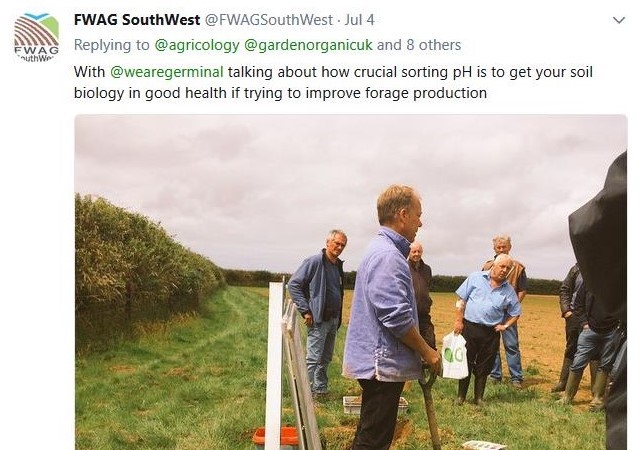 The first response to the invitation we sent out on social media to share photos, tips and experiences in relation to the monthly themes was from FWAG South West, who tweeted about an event where they were “talking about how crucial sorting pH is to get your soil biology in good health if trying to improve forage production.” (See right)
The first response to the invitation we sent out on social media to share photos, tips and experiences in relation to the monthly themes was from FWAG South West, who tweeted about an event where they were “talking about how crucial sorting pH is to get your soil biology in good health if trying to improve forage production.” (See right)
This immediately highlighted the all-important synergy between soil chemistry, soil biology and crop growth… Something that Ed Hamer, our featured grower profile, tries to maximise on through his use of green manures, which form the basis of building soil structure and fertility at Chagfood. You can read about how he incorporates green manures into the horticultural rotation and how the quality and yields of crops produced have increased alongside the populations of soil biota.
Agricology hosts an ever expanding library of resources, blogs and farmer profiles that explore the value and ways of improving soil biological activity; from looking at assessing and testing soil health and the impacts of reduced tillage, soil organic additions and cover crops, to how soil biota can impact on ecosystem services, the effects of poor soil structure, and the potential consequences of not looking after our “soil saviours” (as described in the Oxford Farming Conference video featured on the site…). The newsletter highlights a handful for you to explore…
‘Digging the Dirt on Lower Smite Farm’ is one of a series of Soil Association reports focusing on what farmers are doing to improve and sustain soil health. In this one you can read about Caroline Corsie of the Worcestershire Wildlife Trust improving soil organic matter (and therefore soil biota) whilst enhancing wildlife through using sustainable natural inputs and an innovative crop rotation. The Game & Wildlife Conservation Trust’s report ‘The Role of Soil Biology in Crop Nutrition’ highlights farming practices that encourage healthy soil activity. As it says in the report,
“The existence of just one organism within the soil can support many others, so a holistic approach is vital in order to maintain the complex food web.”
‘Cover crops in a no-tillage system’, one of the AHDB’s ‘Farmer Experience’ profiles, focuses on Jake Freestone of Overbury Farms, and explains that one of his reasons for cover cropping is to increase soil biology through increasing soil organic matter.
Crops Researcher Dominic Amos from the Organic Research Centre describes some of the fascinating science behind compost teas and looks closely at latest findings from the Innovative Farmers Field Lab in his blog ‘Compost tea – a good brew?’ (Picture above shows compost tea brewer, as featured in Dominic’s blog).
Dr Felicity Crotty’s blog ‘What is a healthy soil’ features video footage filmed at the Game & Wildlife Trust Allerton Project’s 25th Anniversary Open Day of herself and Prof Jane Rickson from Cranfield University emphasising the importance of getting soil structure right in relation to improving (amongst other things) soil biological activity, and the importance of measuring and monitoring over time. Felicity writes about some of the cover crop and no till research being carried out at the Allerton Project, and the expected benefits of enhanced soil biology and improved soil fertility. In ‘Biofertiliser: A probiotic approach to soil & plant health at Ragman’s Farm’ you can watch Matt Dunwell describe their innovative endeavours in enhancing soil fertility and crop health in their orchards through using biofertilisers. He highlights that one of the benefits is increased resilience to attack from pests and diseases…
Which brings us on to other pest and disease related content highlighted in the newsletter… Jez Taylor, Head of Daylesford Market Garden, talks about how he manages pests and diseases in the polytunnels in his featured video blog. Focusing particularly on the Solanum crops, have a listen to Jez’s sage advice on ways of keeping red spider mite and tomato blight under control.
A persistent pest of the more slimy variety is the topic of another featured blog ‘New slug control guide launched by MSG’, which reports on the intentions behind the guide and what farmers can expect from it, emphasising the importance of Integrated Pest Management (IPM). 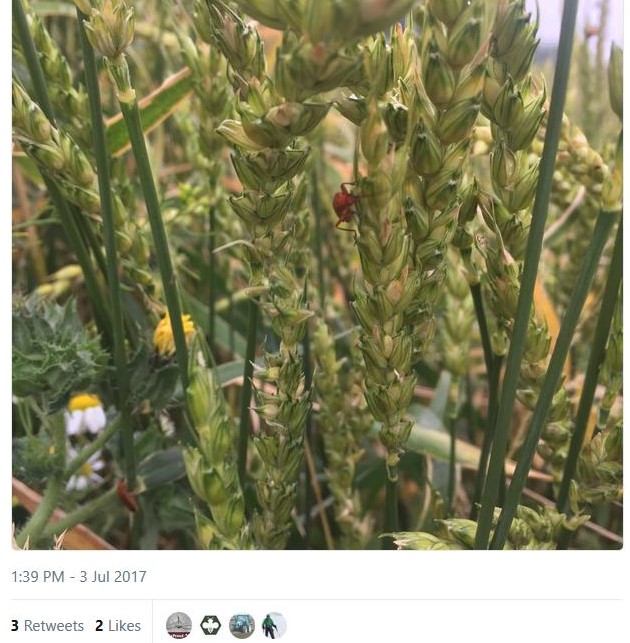
‘BioGreenhouse publications’ provides access to information published through a project that focused on ways of improving sustainability and production in organic greenhouse horticulture. They include looking at some of the major challenges in relation to pest and disease and integrated crop management. Pete Dollimore, in the Organic Grower article ‘Bringing in the bugs’ draws attention to five strategies that the BioGreenhouse project identified as being desirable in improving the ecological sustainability of commercial greenhouses. You can also read about the innovative biological control methods Pete uses in his greenhouses; crop and insect diversity are all important..
Looking ahead, the GREATSoils project has further events and workshops this year focusing on ways to truly make your soil great again; follow the link in the newsletter. An important date for your diary is the 14th of September when Daylesford will be hosting an Agricology Open Day at the farm, and researchers and advisors will bring the latest in agroecology for knowledge exchange in the field.
August is peak holiday time for much of the team but we are bringing information on catch/crops green manures and adding value and alternative markets to your screens so please get involved… as always you can share insights with the agricultural community – on enquiries@agricology.co.uk and connect on social media; Facebook, Instagram, Youtube, and use @agricology to join in the conversation on Twitter.
Happy August farming!
Janie Caldbeck is the Content Editor for Agricology.
Header image photo credit: Dominic Amos, Organic Research Centre
